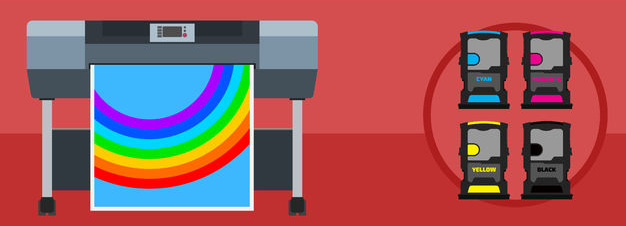If the inkjet printer you use in your home or office is an older model, it’s important to know whether it uses dye or pigment inks. Many older models or consumer printers use dye inks, which means they should not be used to make prints that must withstand exposure to humidity, weather, or UV light.

Dyes are molecules of colorants that dissolve in water. Dye inks cost less than pigment inks and produce more brilliant, saturated colors. But the prints aren’t waterproof and the colors can fade when exposed to UV light. Dye inks are fine for everyday printing of office documents or photos that will be laminated, framed behind UV-filtering glass, or kept in a box or album.
Dye inks can be used for short-term outdoor graphics only when the print is encapsulated (sealed around all edges) in a laminating film made with UV-light inhibitors. The laminating film protects the dyes from humidity and water that can cause the inks to run and the UV-light inhibitors prevent the dyes from fading when exposed to sunlight.
Pigments are particles of colorants that remain suspended in the carrier fluid (which can be water or other solvents). Pigment inks remain on the surface of inkjet papers, forming a thin film and a stable bond. Pigment particles can clog printheads if the particles are allowed to settle in the cartridge. Some pigment inks include dyes to enhance the vividness of their colors.
Because pigment inks are more fade-resistant and water-resistant than dyes, they are a popular choice for printing long-lasting photo prints and wall art as well as weather-resistant signs and banners.
Most outdoor signs are printed with inks that contain pigments because graphics don’t always need an a laminating film or protective coating. The need for additional protection depends on the length of outdoor exposure and types of abrasion or chemicals that might affect the print surface.
Today, almost all new models of in-office wide-format inkjet printers for technical or graphics printing use pigment inks.
If you still use an inkjet printer that uses dye inks, make sure that the inkjet media you buy on the Freedom Paper website is compatible with aqueous dye inks. Look for the “D” icon or filter your search for materials compatible with aqueous dye inks.

